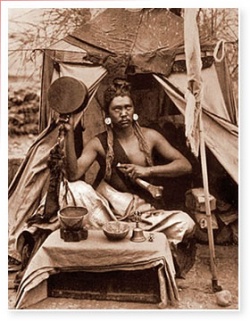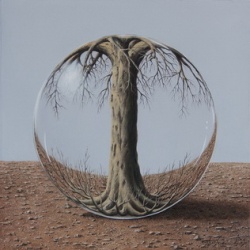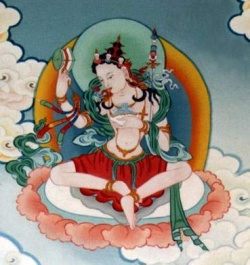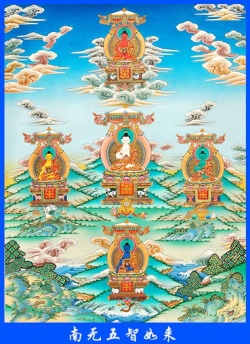The Problem with Gurus
Ever since the Vajracharya, Chögyam Trungpa Rinpoche, arrived in the United States in the early 1970s, controversy and gossip have swirled around Buddhist teachers. Charges of sexual abuse, financial improprieties, alcoholism, you name it, have surfaced at one time or another in connection to various lamas and teachers from just about every school of Buddhism represented in the West. Are these teachers really so corrupt, or do all this gossip and wild accusations reveal more about the minds of those who are making them than any problem with the teachers?
Trungpa Rinpoche freely admitted to having sex with students, both female and male. He never denied it. In fact, he was rather proud of it. It is important to remember, however, that Trungpa was what is called a “crazy wisdom” teacher. Crazy wisdom teachers are well-known for their wild, unpredictable behavior. The famous story of Drukpa Kunley, a crazy wisdom teacher, born in Tibet but who lived much of his life in Bhutan and who lived from 1455-1529, is a case in point. He was known as the “saint of 5,000 women”, and he was never shy about wielding his “vajra” when he saw that by doing so he could help the female who was the object of his attentions become enlightened. As he put it,
I am happy that I am a free Yogi.
So I grow more and more into my inner happiness.
I can have sex with many women,
because I help them to go the path of enlightenment.
Outwardly I’m a fool
and inwardly I live with a clear spiritual system.
Outwardly, I enjoy wine, women and song,
And inwardly I work for the benefit of all beings.
Outwardly, I live for my pleasure,
and inwardly I do everything in the right moment.
Outwardly I am a ragged beggar
and inwardly a blissful Buddha.
Obviously such a sentiment would get him in big trouble today. But during his lifetime he was considered a great saint who led many to enlightenment through his unorthodox methods. He serves as a model for the type of crazy wisdom teacher that Chögyam Trungpa exemplified. Such a teacher operates outside the bounds of ordinary behavior. Due to his enlightened insight, Drukpa Kunley was able to see the needs of his students and give them exactly what they needed to accomplish their path. Trungpa was no different, but he lived in a different time and a different place. This caused him problems.
Why then did he behave in such a way? One of his closest students, Carolyn Gimian, describes Trungpa as having “an extraordinary passion for human beings and a rather outrageous capability to see us from the inside out. He never preached from afar.” He presented the teachings of the Buddha in a straightforward manner, without guile and in a way that Westerners, who had no experience with Buddhism, could relate. He literally paved the way for those who came after him.
Similar problems have beset Sogyal Rinpoche, a Tibetan lay lama who teaches in both the United States and Europe. He tends to attract young females, and in 1994 a $10 million lawsuit was brought against him by a former student who claimed he coerced her into a lengthy sexual relationship, despite the fact that both were consenting adults. The case was settled out of court, but it has continued to stir controversy ever since. However, Sogyal Rinpoche’s books, particularly The Tibetan Book of Living and Dying, are cited by many people as their inspiration for becoming Buddhist.
Even a great lama like Kalu Rinpoche, one of the first Tibetan lamas to teach in the West, has not been immune to malicious gossip and claims of sexual improprieties. A former nun and translator – who now calls herself an “academic feminist,” whatever that is – accused him of subjecting her to an abusive sexual relationship under the guise of being a tantric practice.
Today, all one has to do is make a search of the internet to find a virtual cottage industry of gossip and accusations against virtually every living (and many dead) Buddhist teachers, not just from Tibetan Buddhism, but every branch of Buddhism.
So what are we to make of all this? Are Buddhist teachers really so corrupt?
Perhaps the answer can be found in what psychotherapists term “transference”, or what most of would call projection. Similar to psychotherapists, Buddhist teachers, in particular those associated with Tibetan Buddhism, work to break the student out of their old, tired habitual tendencies, tendencies that have developed over countless lifetimes and that keep the student trapped in endless rounds of life, death, and rebirth. Unless the student can break out of these habituated tendencies, they will never know liberation from this cycle. This is the method that the Buddha taught.
A crazy wisdom teacher like Trungpa or Drukpa Kunley are masters of this and may wage a frontal assault on the many layers of defenses of the student in order to set them free. This can often appear to the student as an assault on their sense of self, or ego (which in fact it is), and this can sometimes panic the student. The student may react to this perceived threat by projecting their own fears and insecurities onto the teacher, and the teacher may respond by reflecting those fears and insecurities back onto the student in the hope that by doing so they may wake up to what they are doing. If, however, the student has not practiced what is known as guru yoga, or devotion to the teacher, to the point where they have 100% confidence in the teacher, then the result may be that they run away from the teacher and begin to make all sorts of accusations against him or her as a defensive reaction against the perceived threat.
There are some people who feed off such gossip and accusations, delighting in them, feeling that they make themselves look blameless and spotless, even though the truth is almost certainly quite the opposite. They begin to think of themselves as better than the teacher, smarter, more “enlightened”. This is, of course, nothing more than delusion. All the person is doing is pumping up their own pathetic ego, meanwhile completely missing the opportunity to rid themselves of the poisons which keep them forever revolving in cyclic existence. They become so infatuated with their own cleverness and “rightness” that they forget that death approaches rapidly, and that they will leave this life totally unprepared for what ensues. It is a sad situation, but one that continues to be widespread in the West.
Perhaps as Buddhism becomes more mature in the West, such nonsense will diminish. That is what we pray for.
Sources:
The Divine Madman, by Keith Dowman, Pilgrims Book House, 2000
Stripping the Gurus, by Geoffrey D. Falk, Million Monkeys Press, 2009
The Collected Works of Chögyam Trungpa, Vol. 8, edited by Carolyn R. Gimian, Shambhala, 2004
“Best-selling Buddhist author accused of sexual abuse”, by Don Lattin, The San Francisco Free Press, November 10, 1994
“The Emperor’s Tantric Robes: An Interview with June Campbell on Codes of Secrecy and Silence”, Tricycle, Winter 1996




